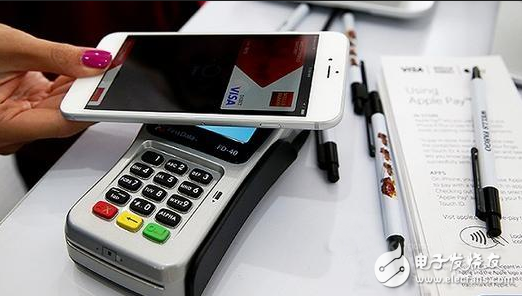Behind the more convenient topic of Apple Pay and Alipay, there are years of debate about the pros and cons of NFC and QR code. More specifically, it is the debate between the near field communication and the graphic code (including QR code, barcode, etc.).
The two-dimensional code encodes "0" and "1" with a point of a specific arrangement and carries information. Information can be output to the network through an image input device or an optical scanning device. Although the reading is slow, one-way, and the amount of information that can be carried is small, the cost is low and the copyability is strong, and it is often used as a one-way read voucher and an identification mark.
NFC evolved from high-frequency wireless communication technology to transmit data through near-field RF signals. Although the cost is high, it can transmit data in two-way communication, fast reading, high security, and includes various methods such as card and device, device and device (reader mode is reading, card emulation mode is read, point-to-point mode) Is interactive), a wide range of applications, such as access control, payment.
Many analysts believe that NFC has a better outlook, especially in line with mobile payments – non-contact, fast, and secure. In addition to mobile payments, bus cards, data transmission, new train tickets, boarding passes, access control, etc. can be achieved through NFC technology. It seems that NFC is the future of smart living.
In fact, whether it is the application of NFC in payment, or the application of QR code in payment and voucher, it is just the tip of the iceberg. Their larger application is to provide solutions for the connection of the Internet of Things.

Is Apple Pay the right way to open the Internet of Things?
Is the Internet of Things that has been sung in the wrong direction?
The Internet of Things extends the "information exchange and communication" between the Internet and the object, and is regarded as an important part of the new generation of information technology after the Internet and the mobile Internet.
In the past few years, technology companies have realized the arrival of the Internet of Things era. Google, Apple and Samsung are all building their own ecosystems Brillo, HomeKit, TIzen, and various device vendors are developing products around these platforms.
Usb Mini Fan, a ideal design for both outdoor or in office or at home. You don`t need to worry about the high temperature in summer when you have this Mini Fan . As a mini fan, you can take it in your bag to anywhere. And it can cool you down when you are hot.
Strong wind and no noise: The Mini Handheld Fan uses a brushless DC motor to provide strong wind while quiet, energy-saving and stable operation. The maximum rotating speed of the fan is about 3520 rpm which is enough to keep you cool, works by accelerating airflow, low noise, giving you a cool and wonderful summer.
Adjust speed: Our mini Portable Fans have 3 adjustable speeds, press the power button repeatedly to adjust the appropriate fan speed you need.
With USB cable: USB port rechargeable, powered by lithium polymer battery, our Mini Usb Fan comes with usb cable which can be charged with computer, power bank , mobile power and other devices.
Ideal design and portable solution: The size of the mini handy fan is 206*85*235mm, easy to take.
Usage: Including outdoor using, you also can use this Handheld Fan in office or at home to put it on the desk. With low noise and smooth wind, others will be not disturbed.
Mobile phone holder: This handy mini desk fan is also a mobile phone holder when put on the desk or table. Small body, big power, enjoys the cool summer and gentle wind at anytime and anywhere.
Usb Mini Fan
Usb Cooling Fan,Mini Desk Fan,Mini Portable Fan,Portable Usb Fan
SHENZHEN HONK ELECTRONIC CO., LTD , https://www.honktech.com